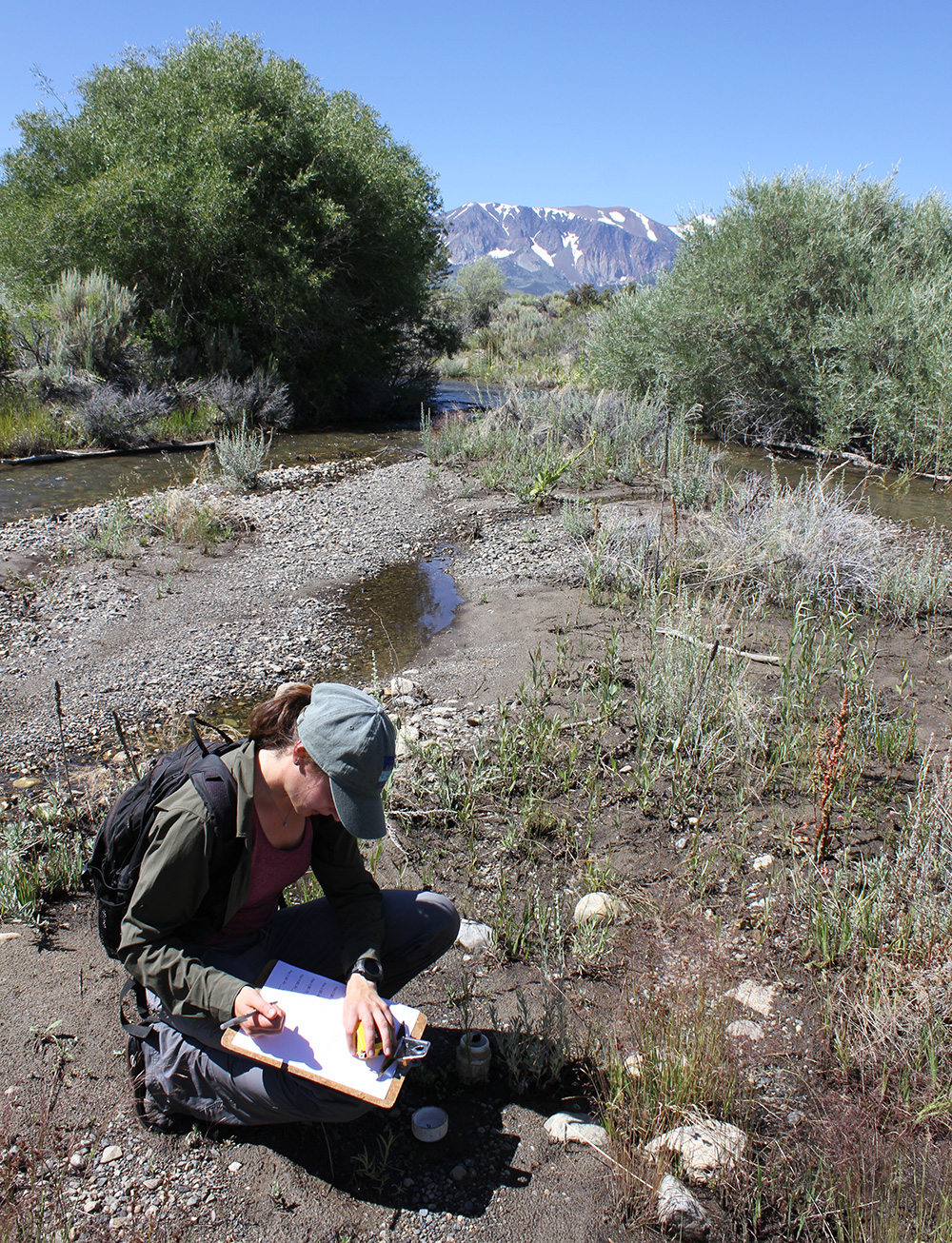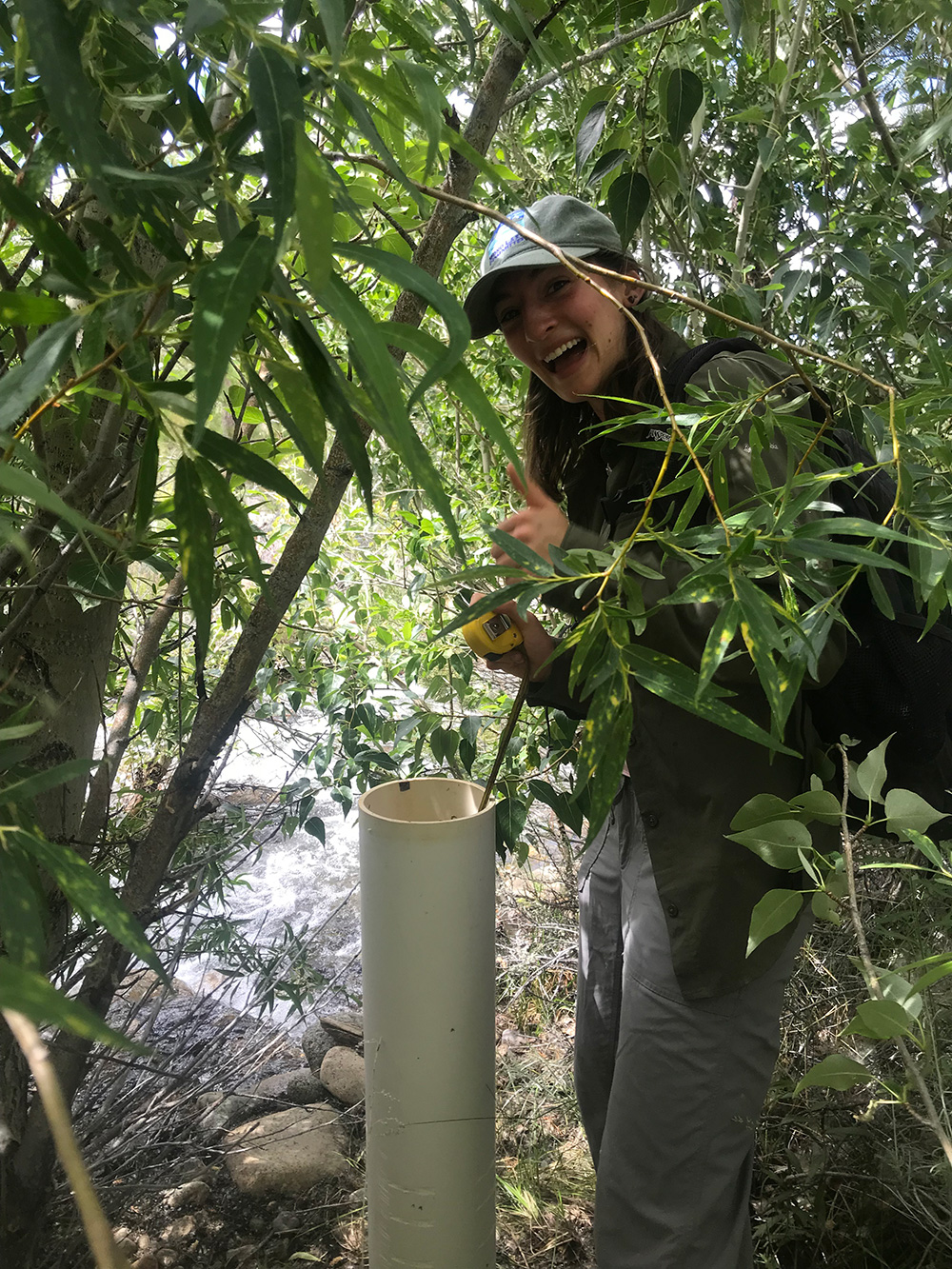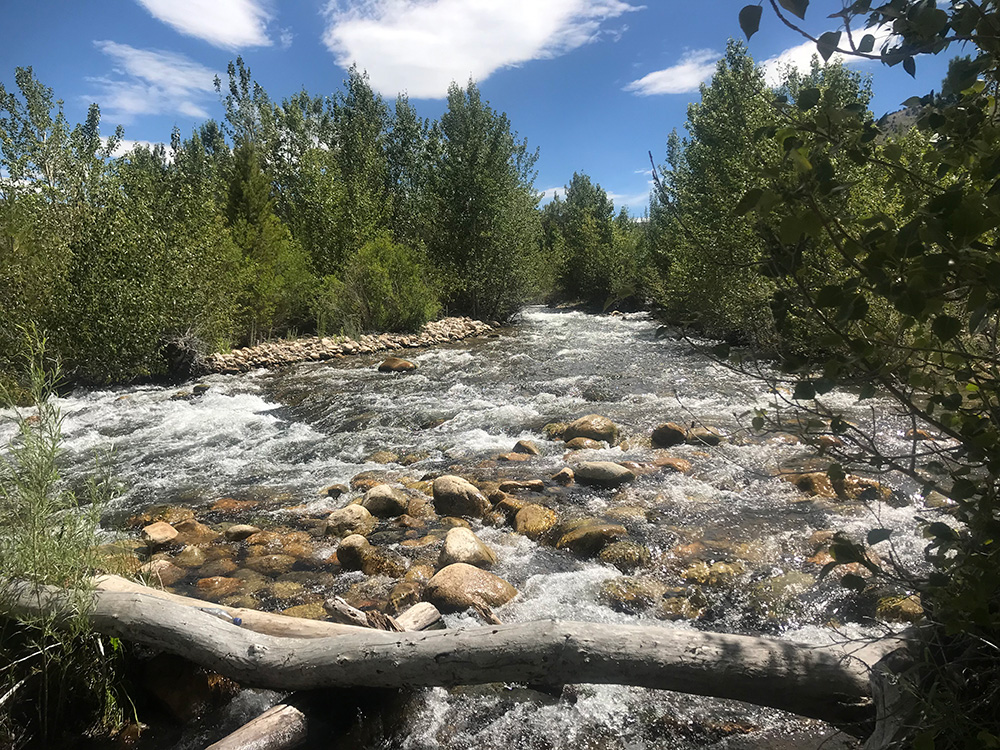
This post was written by Caroline Bottega, 2019 Mono Lake Intern.

“I can really count this as work?” I thought, while wading knee-deep in the cool, swift water of Rush Creek. Robbie Di Paolo, the Mono Lake Committee’s Restoration Field Technician, was a few paces ahead and leading the way to our next monitoring well. It felt like a scavenger hunt, as we navigated from well to well between the stream channels and sagebrush until another tall, white PVC pipe would finally appear among the vegetation.
Part of the mission of the Mono Lake Committee is to restore the important habitats of the Mono Basin, which include the habitats of the freshwater tributaries that feed Mono Lake. As one of my intern projects for the summer, I have been tasked with collecting groundwater measurements along both Lee Vining Creek and Rush Creek each week. Through my weekly well readings, I have had the opportunity to get up close and personal with the Committee’s restoration efforts and dive deeper into the complex relationships that exist between the important habitats of the Mono Basin.

At first, the task of finding my way through the sagebrush and side channels seemed somewhat intimidating. But, with thorough guidance from Robbie and having spent the last year of my undergraduate degree collecting stream data for my honors thesis, I quickly have been able to find my way through the riparian corridors of the Mono Basin.
By going out in the field on a routine basis, I am learning to detect subtle changes in each habitat that I did not notice during my first few days on the job. The Mono Basin is truly a dynamic system that requires close and careful attention in order to fully understand and, as a novice seasonal intern, I am merely scratching the surface. However, the opportunity to carry out these weekly groundwater readings has further connected me to the landscape and the Mono Lake Committee mission, of which I am privileged to play a small role in supporting during my time here.

